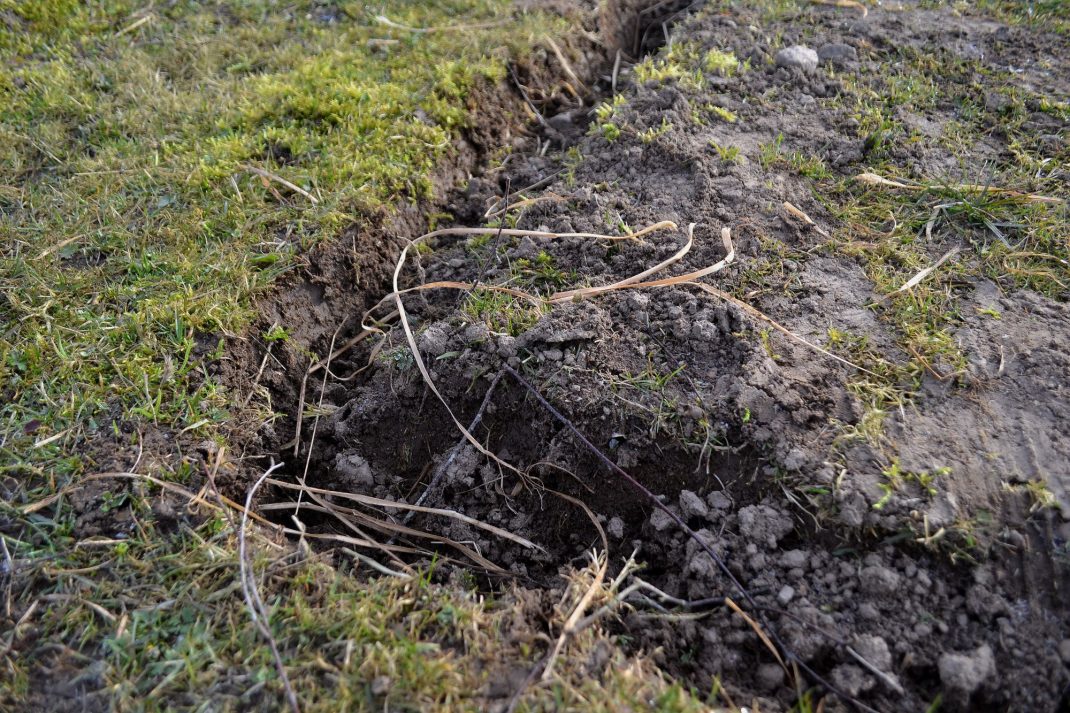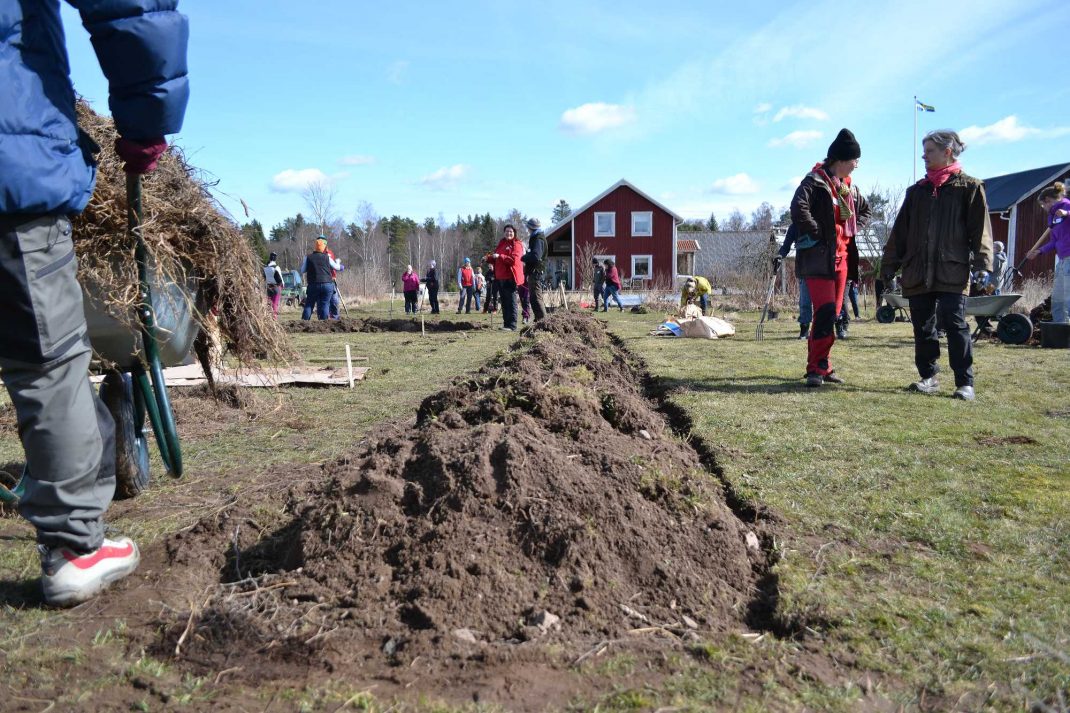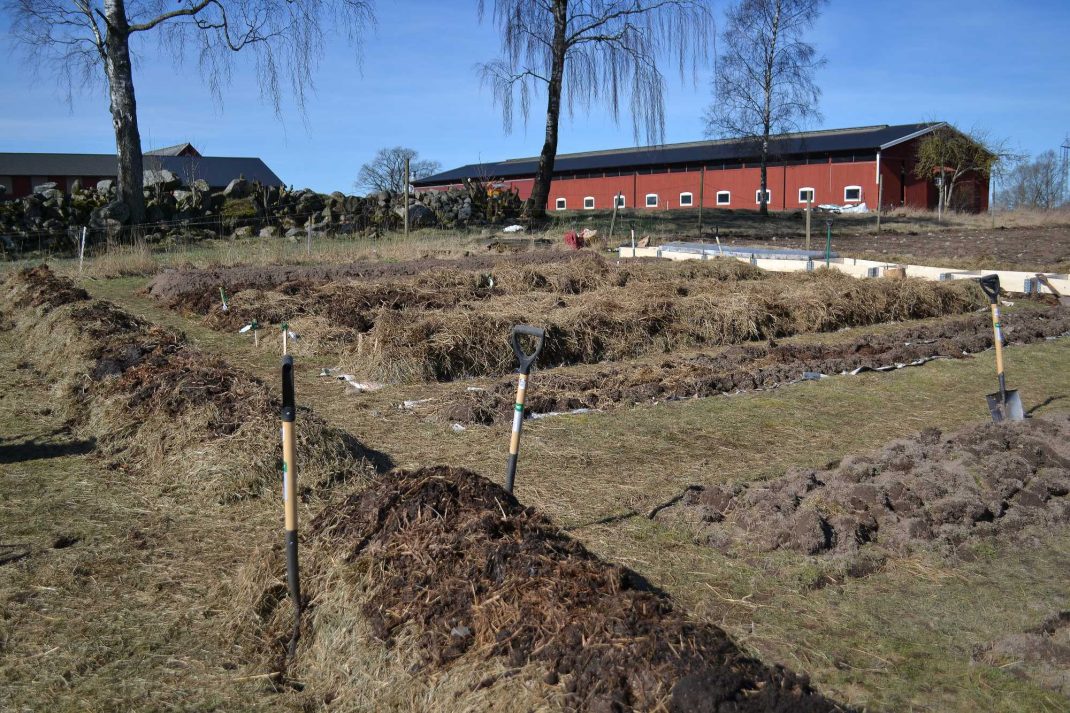Creating a raised bed with grass sod
I have so much grass sod in my garden right now. And I plan on using it to build new beds!

I dug a little ditch as an outline of the bed. This space between the grass and the bed will keep the grass from growing into the garden bed.
I recently wrote about how to create new growing beds, the subject of a class I held at the end of March. The new asparagus bed was created in a spot where we removed the sod and filled the space with silage, manure, and soil. You can read the article called Creating new beds – my best methods.
Then there was the question of all the sod we removed. What should we do with it? Well, the next method I wanted to talk about answers that question: We use it to build another bed. This is how it's done.
Creating a bed with grass sod
- I used some string to plot out my bed, this bed is around 3.4 feet (1 meter) wide.
- After that, I dug a small ditch around the string to keep grass from growing into the bed.
- I put the grass sod from the bed I made earlier on top of the new bed, upside down together with weeds I cleared out earlier. So, grass against grass. I put the grass sod upside down to keep the grass from growing here.
- Lastly, I covered the bed with silage and a heavy layer of manure. The main function of the manure is to keep the silage from getting caught by the wind.

I put the grass sod with the grass facing down, creating a soil ridge.
The silage helps keep the soil moist even when the sun starts to warm it up. The sod and weeds will decompose here and turn into really great soil in a year or so. I will use the little sod ridge to grow rhubarb that I can use for my dessert pies, marmalades and more.
Cover with newspapers
If you happen to have a pile of old newspapers (with non-toxic ink of course) lying around, put them right on the soil and add a layer of silage/manure and mulch on top. This will put a halt to any growing weeds. We didn't have quite enough of newspapers this time and decided to go without. If weeds start to grow, we simply remove it or cover it with newspaper and another layer of mulch in fall. Since the farm I hold these classes at has a seemingly unlimited amount of mulch available, it won't be a problem.
Read more: How to make a no-dig garden bed
What can I grow here?
I would go for plants that spread out over large areas. These types of plants cover the surface which will keep the bed from drying out. The material in the large pile will decompose faster if it's nice and moist.
All in all, I have to say that pre-planted vegetables might be the best fit for this type of bed. You could, for example, use cabbage, beans, low-growing tomatoes, zucchini, pumpkin, cucumber, artichoke, and potatoes. I would make sure to only pick vegetables that don't grow very tall. Taller plants might topple over.
I would completely avoid vegetables with small seeds that should be direct-sown in your beds. Try to stay away from delicate little plants that could get completely smothered by the mulch too. The mulch needs to stay on the bed for the entire season and it could be a real problem for the smallest plants. Avoid growing spinach, arugula, lettuce and carrot in this bed.

I used this method to build the two tall and long beds to the left in this picture. We topped them off with a layer of silage and manure.
When fall comes
I think of this area as a little soil factory. We get plenty of new top-quality soil here as soon as the mulch starts to decompose. I will dig some of it out next spring before we plant rhubarb here. My garden works best when I have a few little working soil factories that produce all the soil I need for my projects. This is going to be one of my soil factories here at Rinkaby. We will keep working on these beds in the next class.
/Sara Bäckmo



Leave a Reply
You must be logged in to post a comment.